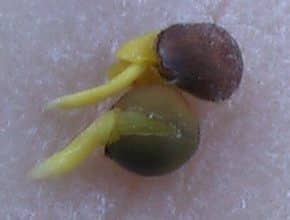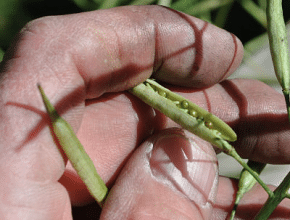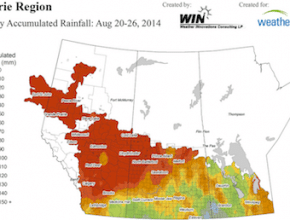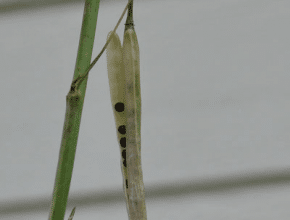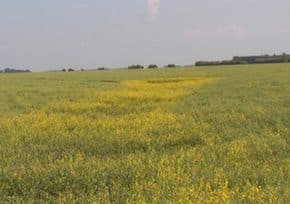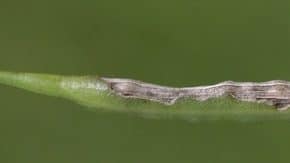Excess moisture has caused some canola to sprout inside pods. There is not much growers can do to avoid this, and combining early is not an option — given the storage risk. Sprouted seed is categorized as “damaged” seed, which is a grading factor. No.1 canola can have a maximum 5% damaged seed. No.2 can have up to 12% damaged…
Canola Watch Posts
-
-
Swathing after frost. After heavy frost, swathing may be necessary to preserve yield. After light frost, leave the crop standing but check again after a couple days to make sure damage isn’t worse than expected. Green scheme. Early swathing, especially in hot fast-curing conditions, can lock in high green counts. Wait until 60% seed colour change on the main stem…
-
-
This quiz asks three questions that could help growers harvest a higher quality crop…
-
-
Swathing too early and in hot windy conditions can contribute to high levels of green seed. Cutting canola in hot conditions leads to rapid dry down and desiccation, which doesn’t give chlorophyll time to clear from immature seed. Waiting until less mature seed is at least firm to roll between thumb and forefinger will help minimize yield reductions from early…
-
The swath decision becomes more difficult in crops with plants at multiple stages of growth. For example, if some plants are at 60% seed colour change (SCC) on the main stem and other plants are still flowering, growers may want to hold off on swathing. Or if plants are large with many secondary stems, the main stem may be at…
-
Clubroot, blackleg and sclerotinia stem rot are found in many canola fields at this stage of the season. Taking time now to determine what diseases are present and at what levels can help with variety decisions and crop rotation planning for next year. Here are a few videos with helpful tips…
-
Flea beetles feeding on pods is unlikely to cause an economic loss. Entomologists have not set thresholds for late season flea beetle feeding, but it’s generally believed that numbers have to be very high — perhaps 100 per plant — before economic losses occur. You may also note that flea beetles can be highly variable at this time of year,…

